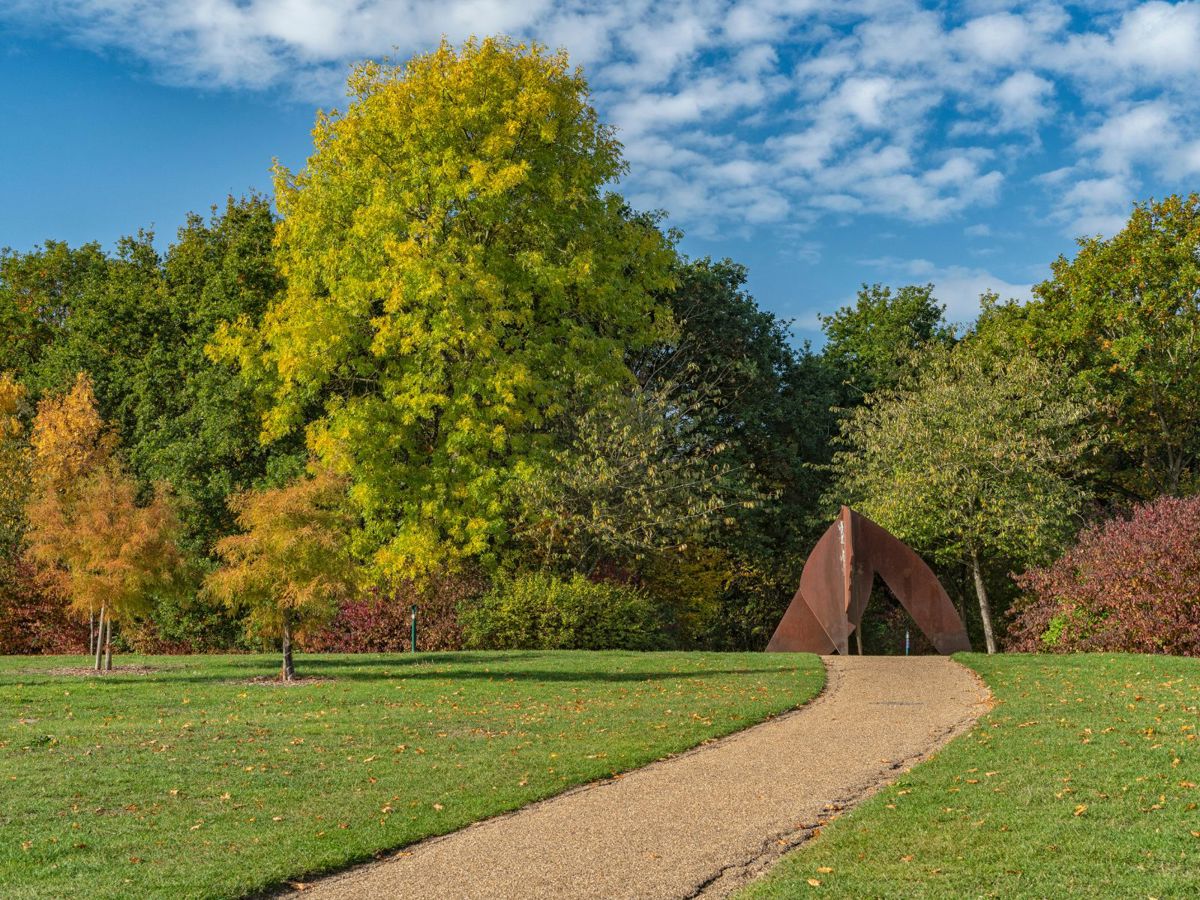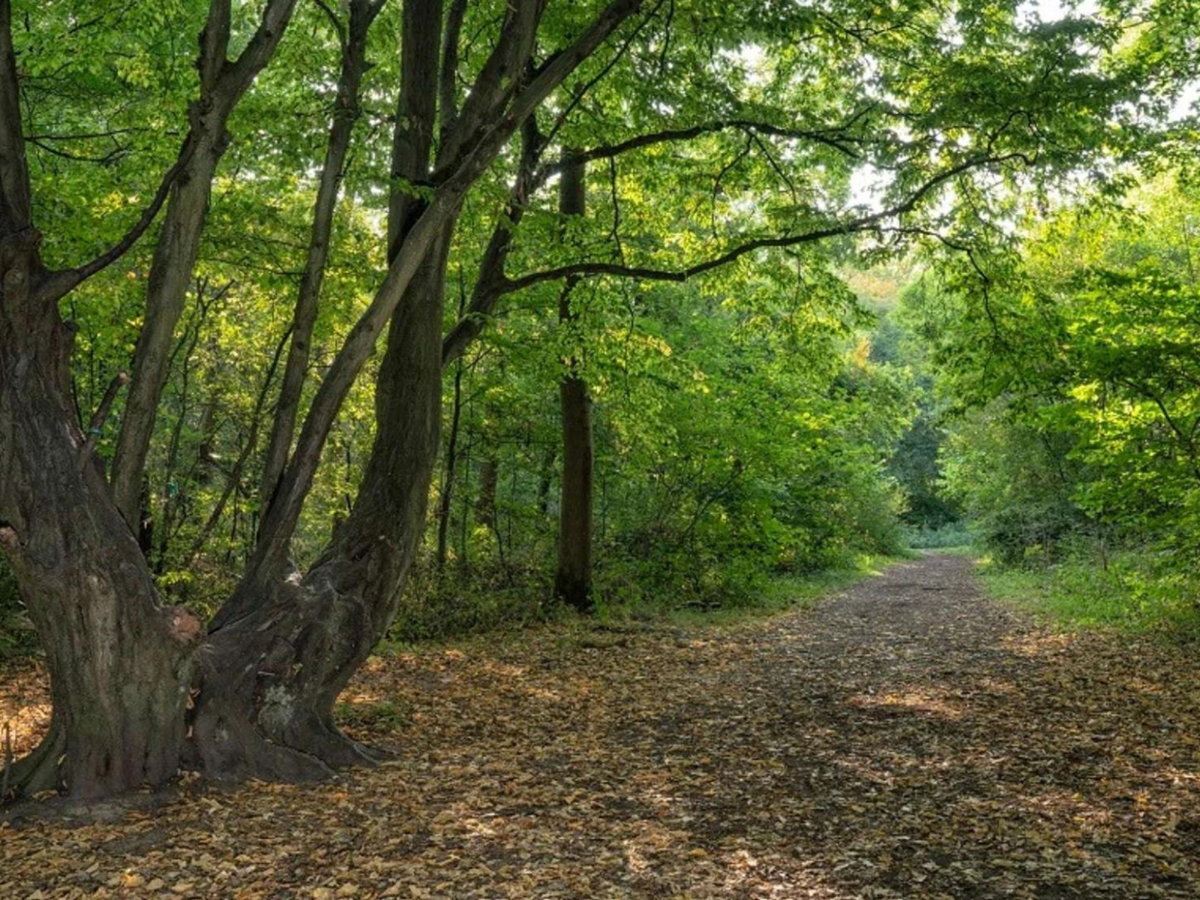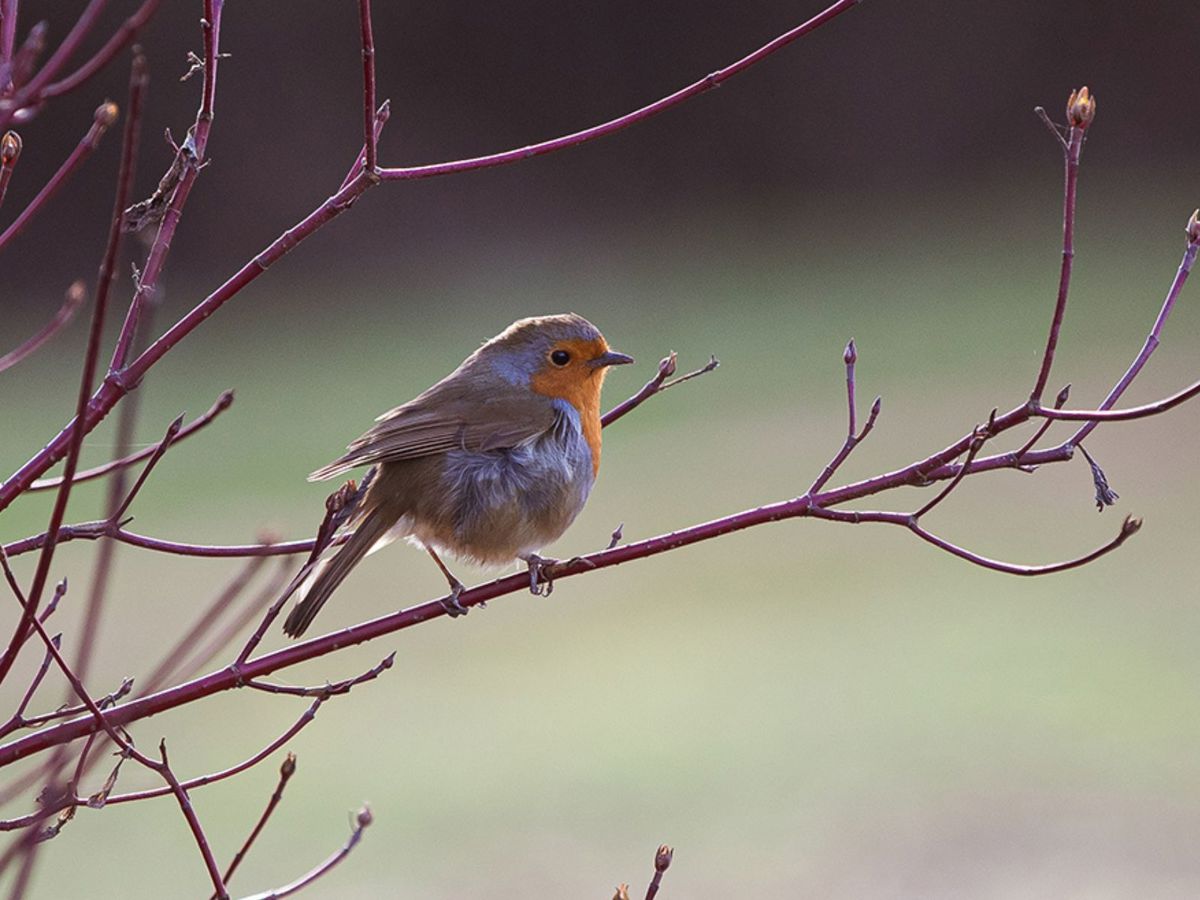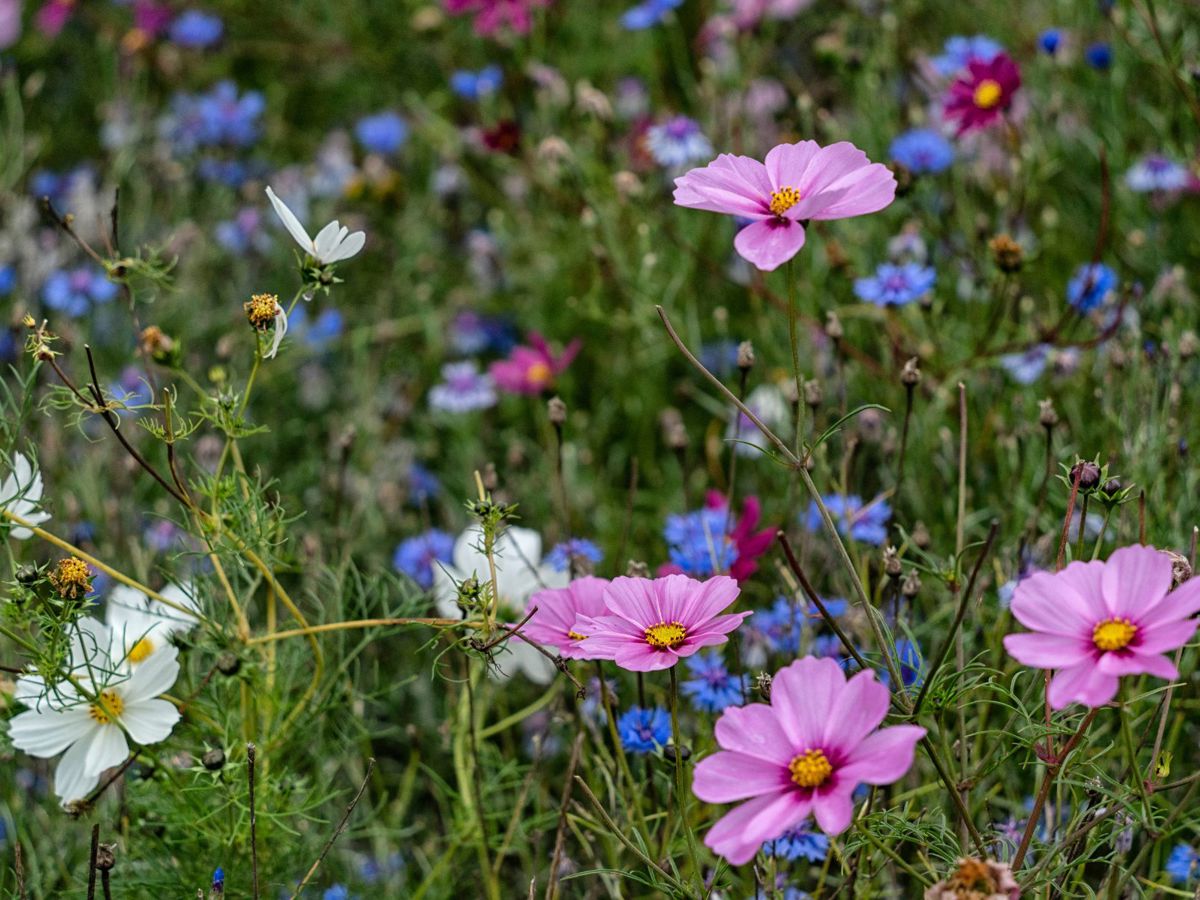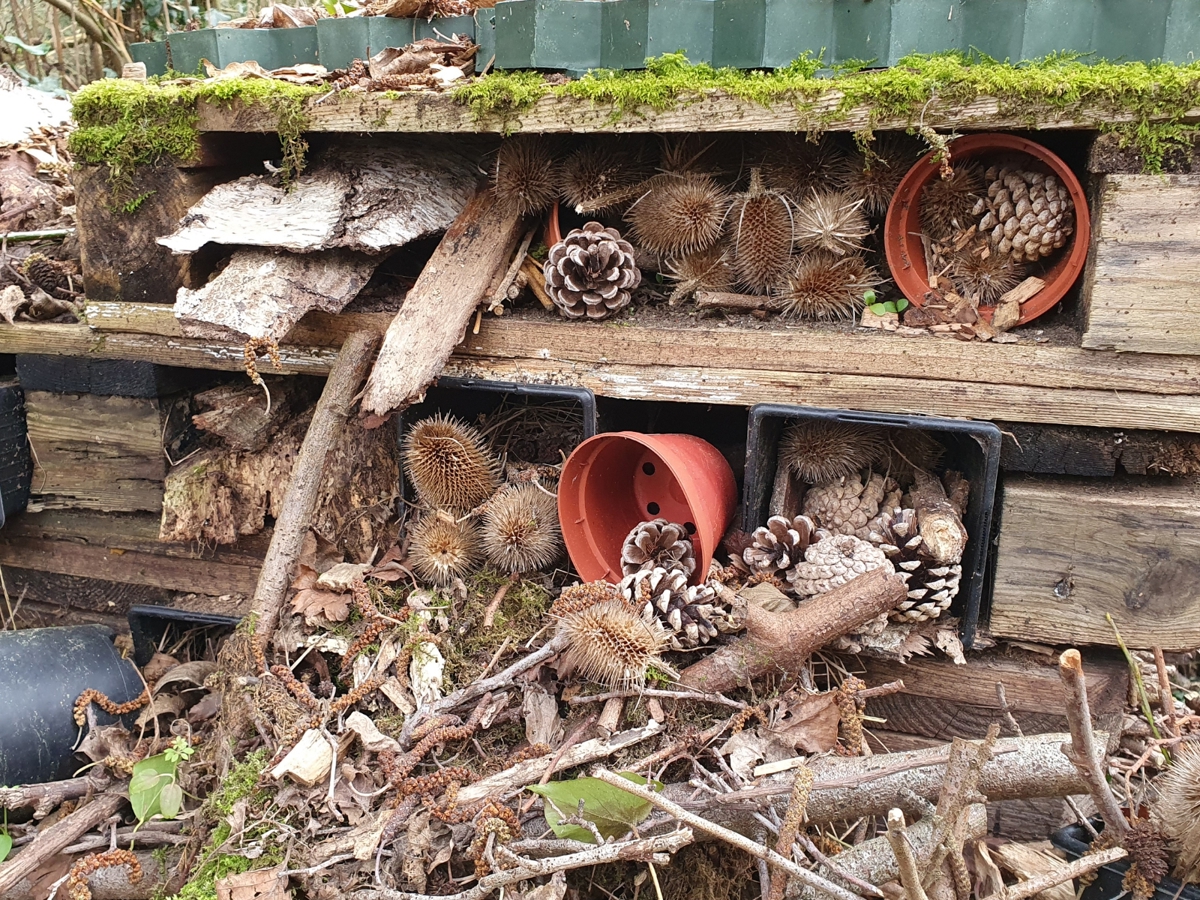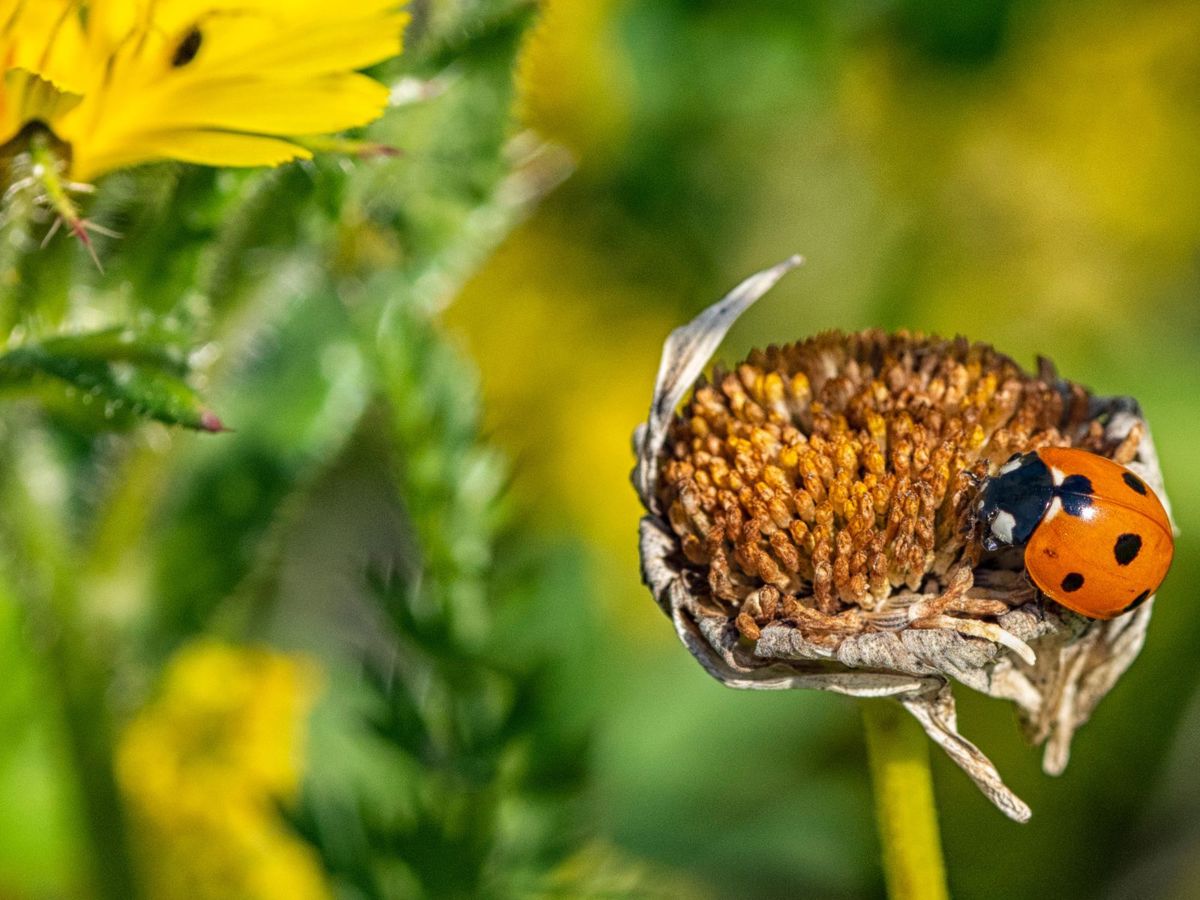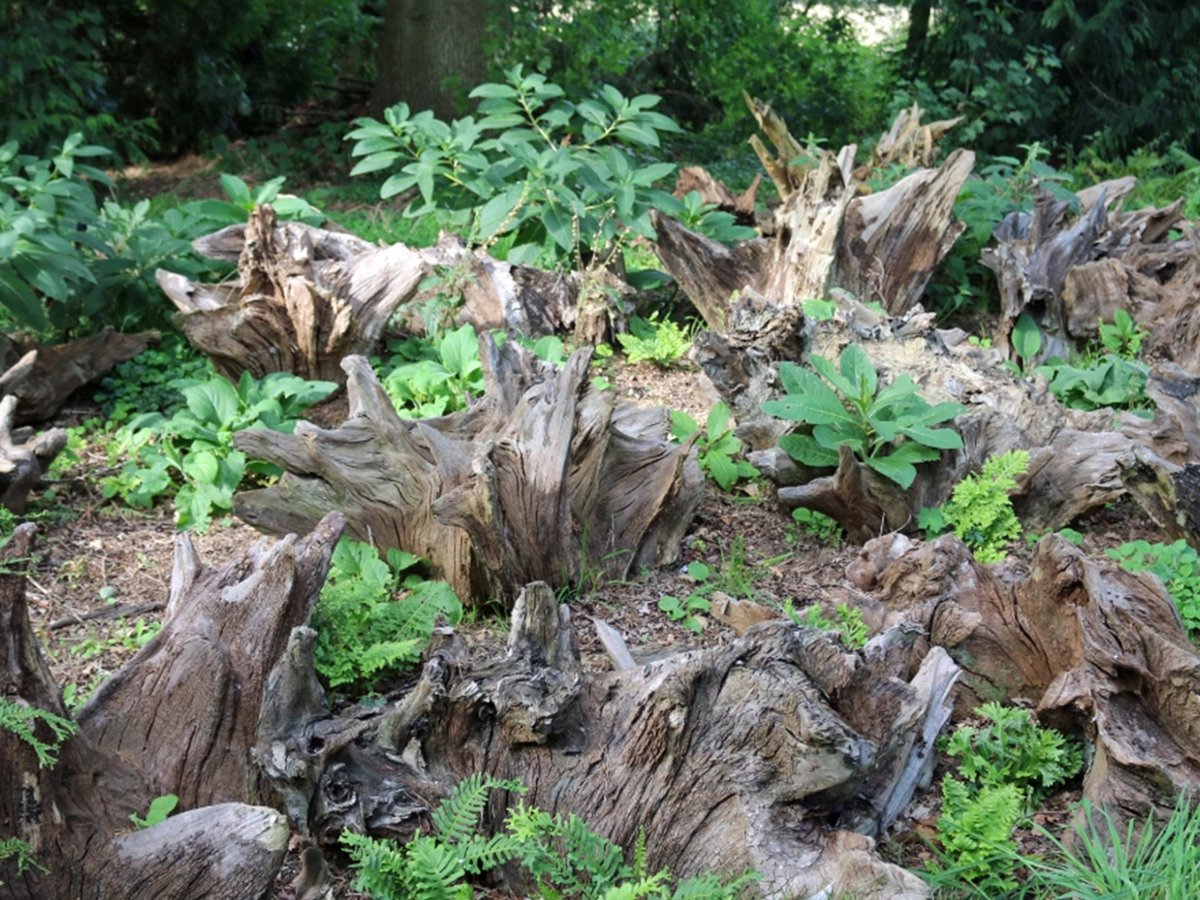
Making your outdoor space wildlife-friendly
Published: 18/08/2025
If you’re lucky enough to have a garden or balcony, have you ever wondered how to attract more butterflies to it, or asked yourself why a hedgehog hasn’t visited yet? Making your outside space wildlife-friendly is easier than you might think. A few small changes that you can build on year on year will make the world of difference to the local wildlife that call Milton Keynes home.
Did you know that there are around 116,000 gardens and balconies in the city? These spaces have the potential to become a stepping stone for amphibians, mammals, birds and insects.
Do you have a balcony rather than a garden? Find out how to make your balcony wildlife-friendly.
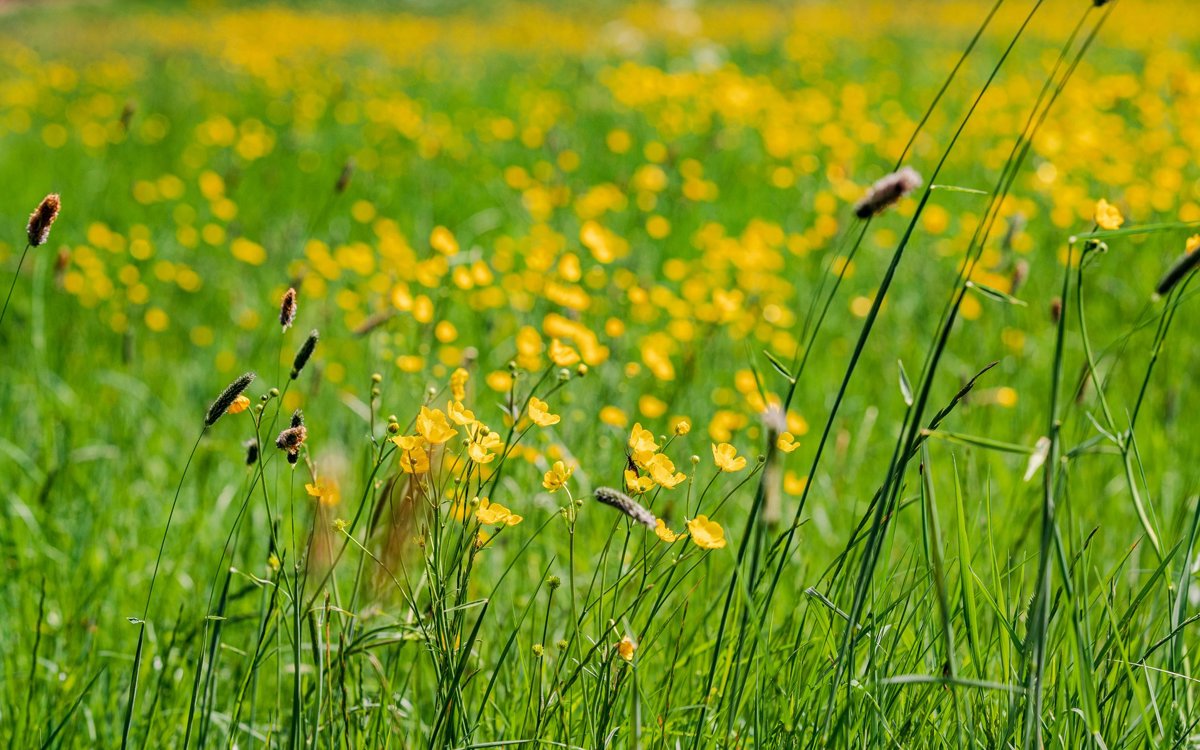
Keep it wild
Wildlife isn’t bothered about neat and regimented gardens – in fact, the untidier the better, which actually means less work for us humans! Some tips on doing less:
Mow less frequently – Long grass is more biodiverse, providing homes for butterflies, grasshoppers, spiders and more.
Leave some “weeds” – a weed to a human isn’t a weed to other creatures! Did you know that numerous butterfly and moth caterpillars rely on stinging nettles for food? And that birds eat the seeds of dock? And that without dandelions, many pollinators would struggle to find enough food, especially early in the year!
Keep an area wild – if you can’t bear leaving the whole garden unmown (or having too many weeds) sectioning off an area as a wildlife habitat will make a big difference – you could even hide it away with a beautiful dead hedge.
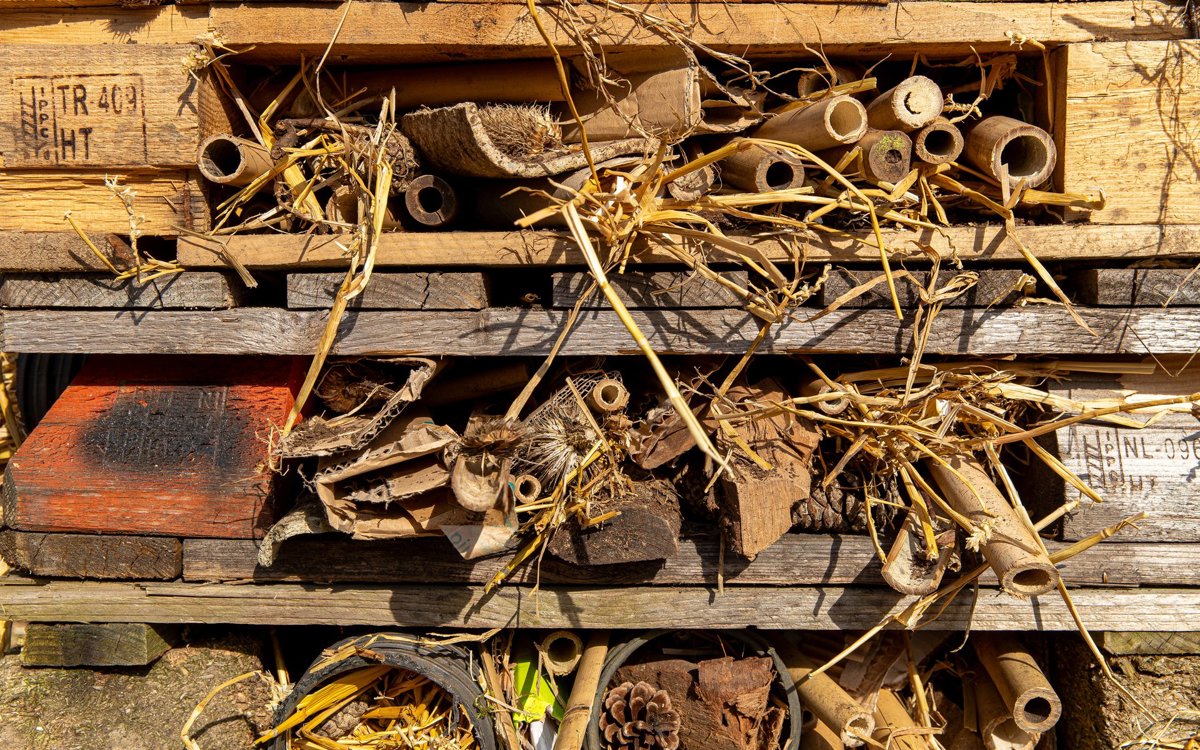
Create new homes
Create a log pile – this will soon become a haven for all kinds of creepy crawlies, amphibians and small mammals. Providing a home/feeding place for small creatures also helps other animals further up the food chain too.
Make a wildlife refuge – undisturbed areas with places to hide will be hugely beneficial to small creatures such as insects, amphibians and small mammals – even a pile of stones or branches will make a difference.
Install a bug hotel – this doesn’t have to be anything fancy – a pile of stones or pinecones, bricks with holes in them, small branches and the hollow woody stems of plants like bamboo will provide numerous places for creatures to hide.
Create a dead hedge – a great way to use up branches, leaves and plant prunings and recycle them back into the ground – but not before they have provided an incredible habitat for hundreds of different species! Shelter for hedgehogs, food for millipedes, deadwood for fungi, a hibernation station for frogs, a hunting perch for dragonflies and nesting space for birds – the list is endless. Dead hedges are a great way of dividing up gardens into sections or hiding away things such as bins or “wild weed” areas too.
Put up a bird box – buy a bird box or make your own and wait patiently for visitors. Check online advice to ensure your bird box is in the right position and that it is from a reputable supplier to keep the chicks safe.
Make a compost heap – the very best way to recycle old plants from your garden, as well as kitchen scraps like carrot peelings and eggshells. You will also have a fresh supply of nutrient-rich compost to reuse in your garden.
Open up a hedgehog highway – cutting a small entrance hole into a fence or back gate will allow these incredible creatures to enter your garden and forage for food (including slugs and snails).
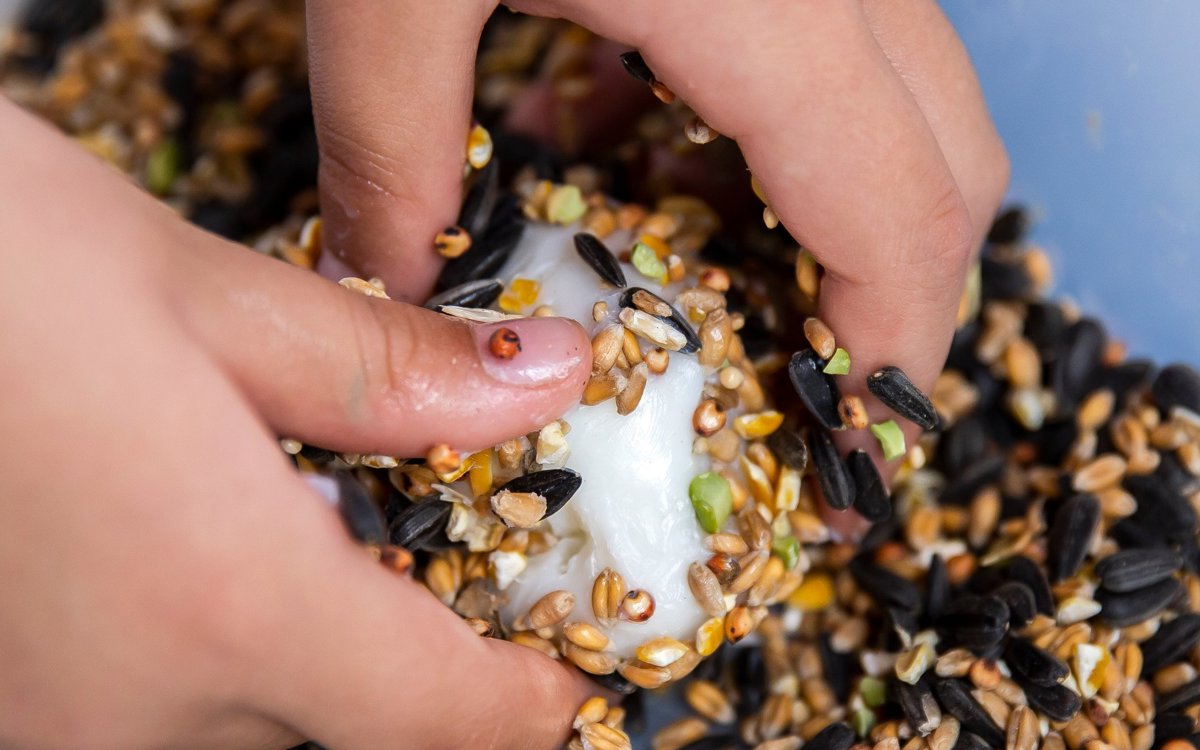
Feed the world
Sow wildflower seeds – these attract all kinds of insects to your space by providing pollen and nectar-rich flowers. If you can find species that flower at different points through the year, this will help the early pollinators as they come out of hibernation too. This is also a great way of encouraging “pest predators” such as ladybirds to your garden to help keep aphid populations under control.
Put up a bird feeder – sunflower hearts are a great no-mess option for year-round feeding, but other seeds will be great for visiting birds too. Keep your feeder clean by disinfecting it once a week with animal-friendly disinfectant to make sure diseases don’t spread through local bird populations.
Provide clean water – a cool drink in summer, or a fresh supply of water when ponds are frozen over in winter – water is needed by creatures great and small. A shallow tray works well. Change the water every couple of days to make sure it’s fresh, and add a few stones to help any insects (such as bees) escape if they fall in.
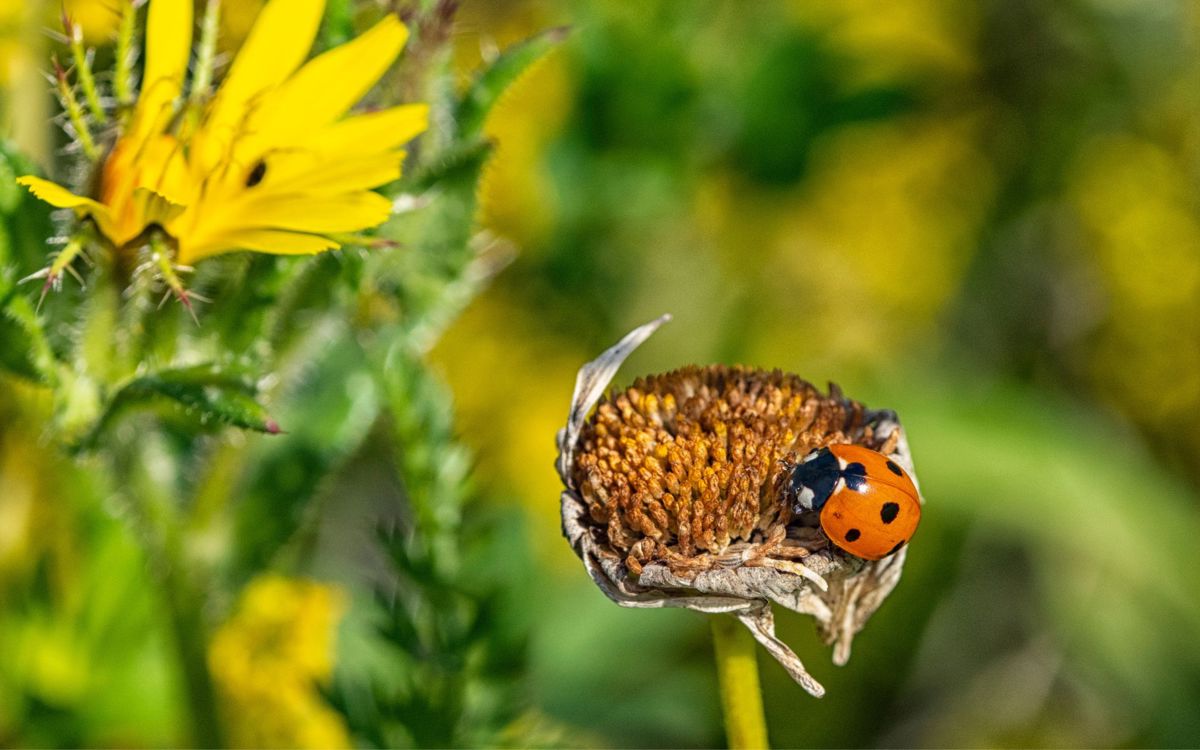
Reduce your environmental impact
Reduce your use of pesticides. Remember that a “pest” for a human isn’t a pest to other animals. Without slugs and snails, creatures such as hedgehogs, song thrushes and toads would go very hungry. Consider using natural alternatives to chemicals – here are some ideas to get you started:
- Place copper rings around plants that slugs target.
- Net vulnerable crops like carrots and cabbages.
- Create a homemade garlic spray to deter certain pests.
- Grow strong-smelling plants such as onions, garlic and marigolds to repel pests including aphids and flea beetle.
- Grow "trap crops" like nasturtiums. They attract certain pests away from vulnerable crops and can also deter others with their pungent smell. Plus they’re edible for humans too and taste great in a salad!
- Encourage beneficial “pest predators” like hedgehogs, blue tits, frogs and ladybirds to your garden, to munch on the pests you’d rather not have. By following the advice in this blog, you will be creating a wildlife haven where these amazing creatures will help you keep on top of pest control.
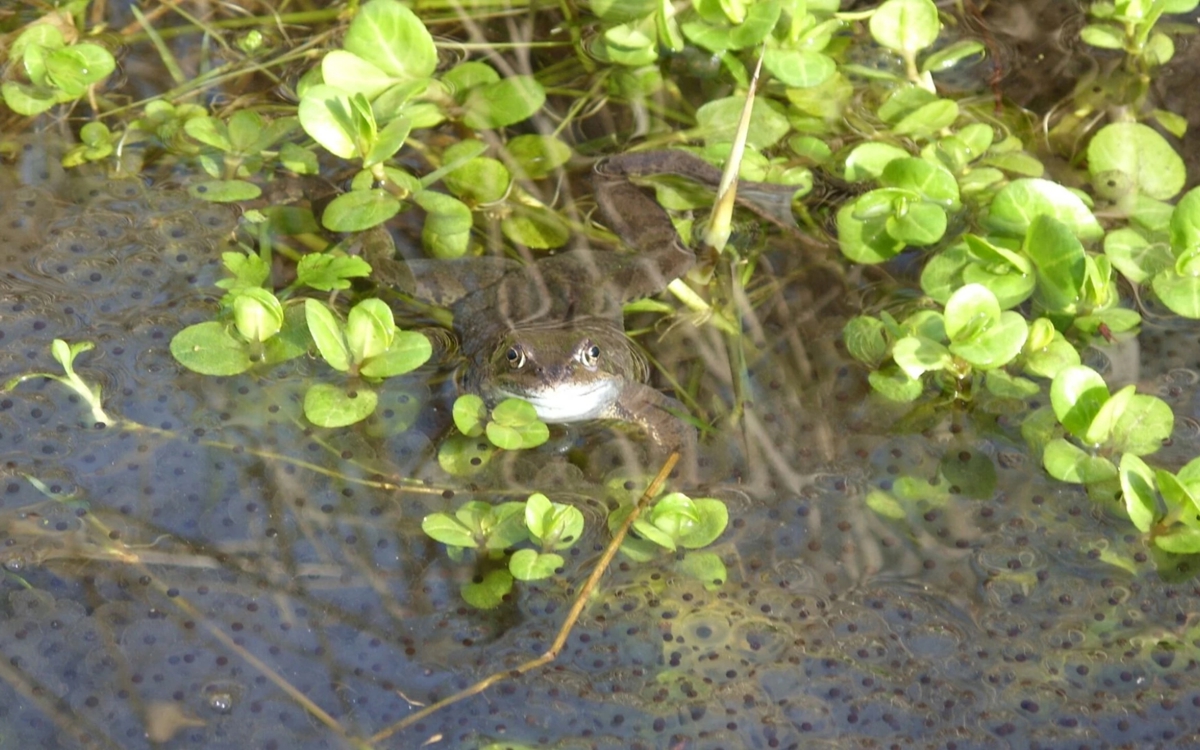
And if you want to go big...
Plant a tree – depending on the size of your space, planting a native tree will ensure shelter, space and food for numerous creatures. Animals will visit the flowers, eat the nuts/seeds/berries and build homes in your tree, and they make a huge impact in a short space of time. Smaller native trees/shrubs include blackthorn, crab apple, dog rose, dogwood, rowan and goat willow.
Build a pond – The single most impactful thing you can do for biodiversity in your garden is to build a pond of any size. The bigger your pond, the more wildlife it will support but even a tiny pond in a washing-up bowl or sink will be hugely beneficial and will encourage a great range of creatures into your space. Find out how to create one with our mini pond guide.
Let us know how you get on!
We can’t wait to hear what things you’ve been inspired to do in your outside spaces. Gardens and balconies are part of a complex patchwork of habitats in your neighbourhood – they don’t just stop at your fence. Be part of the wild revolution, then share your pictures and stories with us by tagging @TheParksTrust and get ready to watch your garden come alive!
Balconies are amazing too! Even a small space can provide a mini oasis for local wildlife. Here are some specific tips to help you make the most of your balcony.
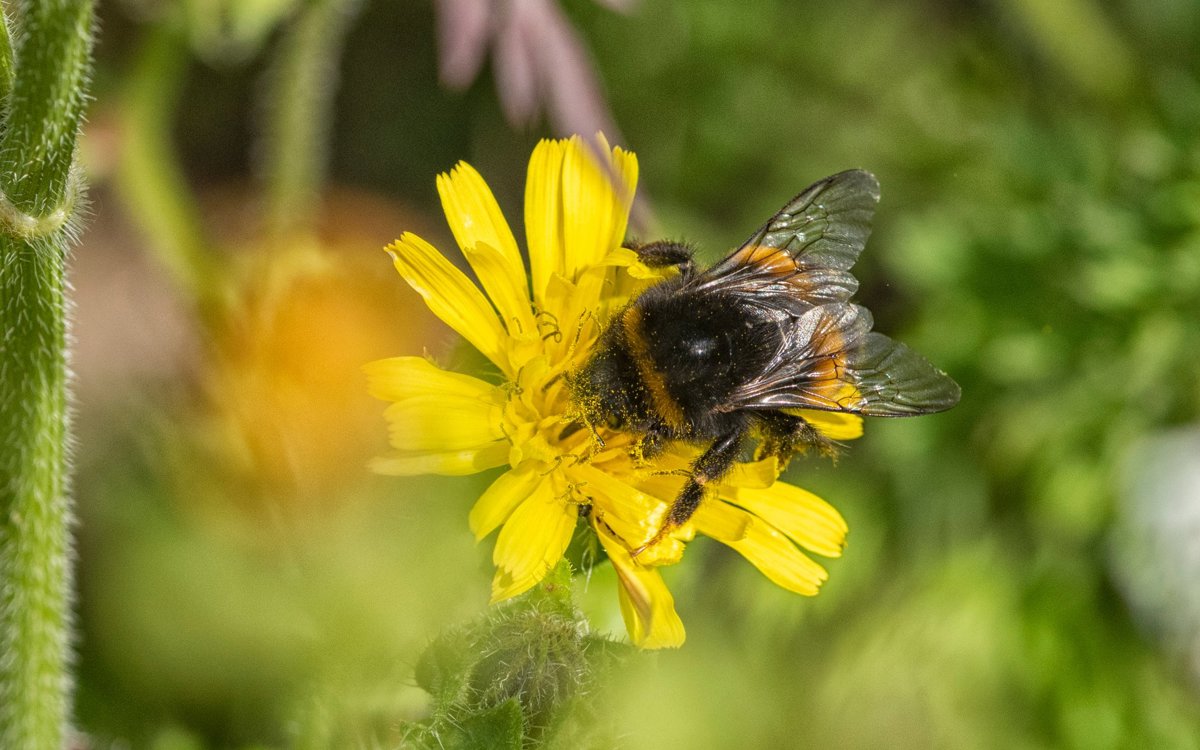
Create a log pile – this will become a haven for all kinds of creepy crawlies, which means that birds will also hopefully visit to munch at the insect buffet.
Install a bug hotel – this doesn’t have to be anything fancy – a pile of stones or pinecones, bricks with holes in them, small branches and the hollow woody stems of plants like bamboo will provide numerous places for creatures to hide.
Put up a bird box – buy a bird box or make your own and wait patiently for visitors! Check online advice to ensure you have your bird box in the right position and that it is from a reputable supplier to keep the chicks safe.
Sow wildflower seeds – attract all kinds of insects to your space by providing pollen and nectar-rich flowers. If you can find species that flower at different points through the year, this will help the early pollinators as they come out of hibernation too! Herbs such as oregano and thyme, or flowers like nasturtiums and edible chrysanthemums will also feed you too so you will get double impact from the same plant.
Put up a bird feeder – sunflower hearts are a great no-mess option for year-round feeding, but other seeds will be great for visiting birds too. Keep your feeder clean by disinfecting it once a week with animal-friendly disinfectant to make sure diseases don’t spread through local bird populations.
Provide clean water – a cool drink in summer, or a fresh supply of water when ponds are frozen over in winter – water is needed by creatures great and small. A shallow tray works well. Change the water every couple of days to make sure it’s fresh, and add a few stones to help any insects (such as bees) escape if they fall in.
Check out our range of outdoor activities designed to help everyone get closer to nature and give local wildlife a helping hand.

